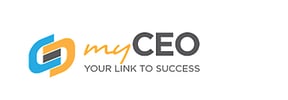
Small business owners should use every tool or resource available to them in mapping out what they want to do with their business and how they intend to get there.
If you have a business coach or virtual CFO, they’ll probably tell you that staying on top of your expenses and revenue is one of the most crucial aspects of your business. After all, running a business is about gaining financial freedom by turning in profit and not bleeding out on expenditures and responsibilities like taxes, salaries and supplies, among other things.
Cash flow forecasting is an aspect of financial management that plans out and predicts future cash commitments and sources of a business. Cash flow is very important for small and medium size businesses that have yet to stabilise financially. By mapping your business’s cash flow, you get an idea on when and how much money would flow in and out of your company.
Cash flow forecasting should be scheduled at regular intervals and should be as far-reaching and extensive as possible. This is done to ensure that the company stays on track with regard to achieving its goals and to give it time to adjust in meeting the cash requirements of pursuing its objectives. Additionally, it can give you an idea as to whether you’re ready and able to expand or invest in other aspects of your business. After all, the first step in managing your cash flow is knowing everything you can about it.
Here are some tips to get you started on forecasting your cash flow.
Be realistic
It might be hard to predict the actual expenses your company is going to make but try to create realistic expectations and estimates. For instance, don’t blindly assume a preposterous cash inflow. Base your forecast on previous data (if any) or on similar businesses. Research on the computations for utilities, salaries, supplies, petrol, etc. and account for them when mapping out cash outflows.
Being specific helps a lot
Itemising your expenditures and cash sources/inflows can help you get a bird’s-eye view of your forecasted finances. When collating your cash flows in a table/graph, try to be as specific as possible when going into the daily expenses of your business.
Foresee scenarios
Try to take into account possible emergencies and contingencies in your forecasting. You’re doing this to prepare yourself for the expenses that may come with your business. Consider seasons, special events and other factors that could positively and negatively affect your business.
Treat it as a challenge
When done right, it may seem daunting to see your cash flow forecast. However, don’t let this demotivate you. Instead, see it as a map on how to improve your business. With this, you can determine what you could be doing wrong, where you might overspend, etc. Treat it as a challenge.
Cash flow forecasting is one of the most useful methods available to business owners that can help them gauge their finances. Make the most out of it by ensuring that you do it right.
Need help with managing your cash flow? Know what aspects of your business you can still work on. Take our free TRUST assessment and find out how myCEO can help you.

